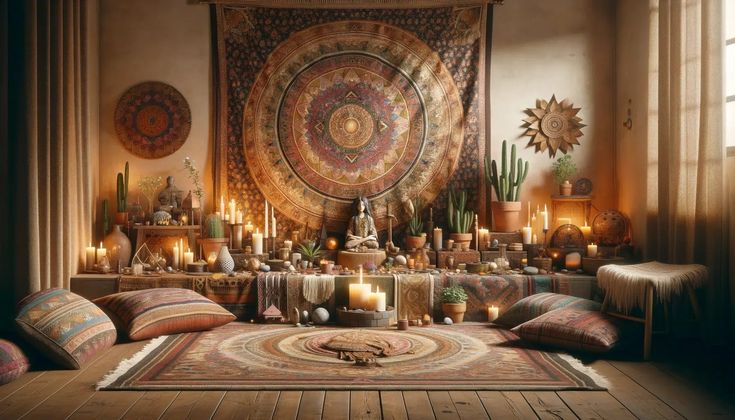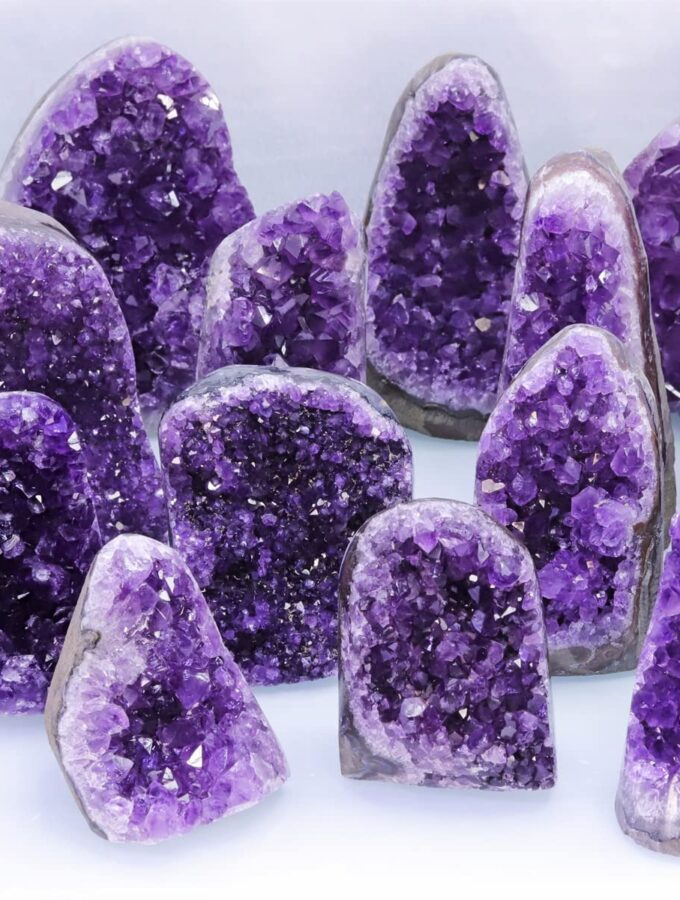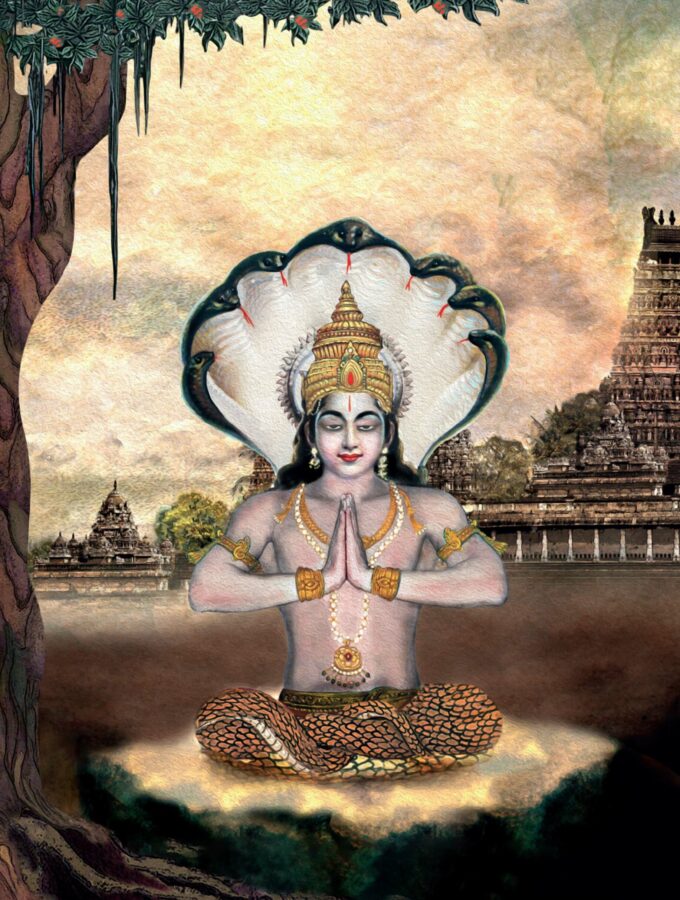
Creating a sacred spiritual altar is a noble and satisfying endeavor. For an altar serves not only as a sacred space, but as a literal physical representation of your personal spiritual practice. Moreover, an altar is both a shrine (pun intended) and a reminder of your spiritual commitment.
Therefore, when creating a personal altar, it’s important its design reflects the specific type of spirituality you follow. Thus, it should be lovingly decorated with your prized spiritual relics and favored items of the natural world. Consequently, your altar will be unique to you and anchor you to your spiritual practice.
However, if you are short on space, not to worry. For an altar can be as large or as small as space permits and as jam packed or as sparse as you like. And virtually any surface is suitable for an altar, such as a table, cabinet, dresser, bookcase, or even just a shelf.
And if you prefer that your altar not be visible to visitors, you can keep it behind closed doors or curtains in a bedroom, office or closet. Alternatively, you can set up your altar inside a doored cabinet. Additionally, consider easy access to a chair or pillows for ease of sitting at your altar.
Spiritually Specific Altar Frameworks
Whatever your personal spiritually is, it should be the framework of your sacred altar. After you’ve built the framework for your specific altar, additional items can be added or removed according to the season or ritual requirements.
Below, we’ve suggested some items suitable for exhibiting upon various types of spiritual altars. Note: this is not an exhaustive list.
Zen Buddhist
- Buddha statue/image
- Quan Yin statue/image
- Elephant statue
- Bamboo
- Pebbles
- Bonsai plant
- Water feature
- Incense
- Mala necklace/bracelet
- Book – Darmapada
Taoist
- Taiji (Yin-Yang) symbol
- Wood natural elements
- Fire natural elements
- Earth natural elements
- Metal natural elements
- Water natural elements
- Incense
- Book – Tao Te Ching
Wiccan/Pagan/Celtic
- Pentagram symbol
- Celtic Cross
- Celtic Knot
- Moon symbol
- Crone image
- Green Man image
- Fertility symbol
- Candles
- Herbs
- Sage bundle
- Essential oils
- Crystals
- Amulets
- Talismans
- Charms
- Athame (ceremonial knife)
- Wand
- Broom
- Black cat
- Crow
- Book – Grimoire
Shaministic
- Feather
- Rocks
- Water feature
- Tobacco/Peace pipe
- Indian corn
- Flute
- Drum
- Medicine bag
- Turquoise/Coral crystals
Egyptian
- Ra statue/image
- Isis statue/image
- Osiris statue/image
- Anubis statue/image
- Thoth statue/image
- Eye of Horus symbol
- Hieroglyphic symbols
- Pyramid statue
- Book – Egyptian Book of the Dead
Yoga/Hindu
- Patanjali statue/image
- Shiva statue/image
- Ganesh statue/image
- Hanuman statue/image
- Incense
- Mala necklace/bracelet
- Book – Yoga Sutras/Upanishads/Bhagavad Gita
Kabbalahist
- Tree of Life symbol
- Merkabah symbol
- Hamsa symbol
- Number 13
- Book – Zohar
Judaism
- Star of David Symbol
- Menorah Candles
- Book – Torah
Christian
- Jesus statue/Image
- Virgin Mary statue/image
- Cross
- Rosary beads
- Book – Bible
Islamic
- Crescent and star symbol
- Hamsa symbol
- Book – Koran
Eclectic
The Eclectic spiritual type of altar is a mash-up of two or more of the above specific types. And there is nothing wrong with choosing bits and pieces cafeteria style to create your own brand of spirituality. For widely revered Swami Vivekananda asserted there should be as many forms of spiritual practice as there are people on the planet.
BTW, the eclectic type mirrors my own personal spiritual practice. For, although I respect all spiritualities, I consider myself a Buddhist-Taoist-Yogini-Celt.
Elemental Altar Items
The four elements of the natural world Earth, Water, Fire, and Air lend themselves well to an altar. Note: the Taoists also count Wood as a 5th element and rename the Air element as Metal.
Nonetheless, whether you’re searching for 4 or 5 elements, it’s a fun activity scouring the landscape for earthy items for enhancing your altar.
Earth Element Items
- Pottery
- Flowers
- Herbs
- Greenery
- Leaves
- Twigs
- Pinecones
- Acorns
- Berries
- Crystals
Water Element Items
- Bowl of water
- Seashell’s
- Starfish
- Sea water
- Sea salt
Fire Element Items
- Candles
- Lanterns
- Incense
- Sage bundle
- Lava rock
Air/Metal Element Items
- Feathers
- Metallic crystals
- Athame
- Wand
Wood Element Items
- Bamboo
- Twigs
- Bark
- Sprouted plants
- Flowering branch
Seasonal Altar Items
Since altars are a living thing, some altar elements should change with the seasons and various seasonal rituals you plan to perform at your altar. Here, we have signified the corresponding equinox or solstice and the sabbat (holiday) connected to each season. For more on these seasonal sabbats, see our previous post, The Wheel of the Year’s 8 Sabbats.
Spring – Equinox – Ostara
- Pastel colored candles
- Seeds
- Bulbs
- Spring flowers
- Flowering branch
- Eggs
- Bunnies
- Bird’s nest
Summer – Solstice – Litha
- Colorful candles
- Summer flowers
- Greenery
- Fresh Herbs
- Fruit
- Berries
- Sea shell/Starfish
- Sea salt
Autumn – Equinox – Lammas
- Yellow/Orange candles
- Fall leaves
- Pumpkins
- Gourds
- Nuts
- Dried corn/husks
- Acorns
- Pine cone
- Wheat
- Straw
Winter – Solstice – Yule
- White/Silver candles
- Dried flowers
- Dried herbs
- Evergreen sprig
- Holly sprig
- Bare branch
Protection for your Altar
It’s of utmost importance your altar is protected from negative energies. Fortunately, there are protective herbs, crystals, amulets, etc., that can be displayed on your altar for this purpose.
- Protection prayers
- Amulets
- Black Tourmaline crystal
- Shungite crystal
- Protective crystal grid
- Rock salt
- Sage
- Palo Santo
How to Arrange Items on Your Altar
When creating a sacred spiritual altar, an attitude of reverent intention is absolutely necessary. And just as important, is cleansing items prior to placing them on your altar. For this, Reiki practitioners can use the Sei-He-Ki symbol for cleansing objects. But others will need to pass them through candle, incense, palo santo, or sage smoke, etc.
Initially, laying down an altar scarf or table cloth will serve as a base for your altar. Then, there’s a rhyme and reason to the placement of each altar item. Commonly, altar Items of importance are raised and centered in the back. And a gradient exists from taller items in the back to shorter items in the front.
Placement of Altar items
Importantly, you want to signal the Universe what type of spirituality your altar will represent. Therefore, place a statue or image that’s connected to your spirituality type in the center back of the altar. If it’s an image, it can be hung centered on the wall above your altar. Whether it symbolizes a deity of worship or an ideal you revere, make it the central focus of your altar.
Then add additional items that represent the spirituality type to the left and right of the back center item. Be sure that items in the back stand higher than forward placed items. To accomplish this, you can set the back items on a decorative box, pilar candle holder, or upturned water glass, etc.
Next, if using them, add candles where they can be easily accessed for lighting and extinguishing. Then, place your elemental items around the candles and your seasonal items in front of them. This will make them easily accessible for switching out as seasons change.
Finally, you will add your protection items nearest the left, right, and center edges of your altar. This establishes a strong intention that nothing negative is allowed entrance to your altar’s sacred space. While humans posses free will, energy lacks it. Consequently, both positive and negative energy are forced to submit to strong human intention.
Dedicating Your Alar
Here, a reverent prayer of dedication that your altar will respect and honor the deity or ideal it represents is important. For this, you can use your own words, or research an appropriate dedication prayer or affirmation.
Final Words for Creating a Sacred Spiritual Altar
It’s important that your spiritual altar is both appealing and a reflection of your unique spiritual practice. By being so, your altar will offer a physical reminder and a convenience for conducting your practice.
I hope you will engage in creating a sacred spiritual altar that you find both beautiful and meaningful. For I know you will enjoy spending quality time at your altar as much as I do at my own. And as always thank you for reading.




